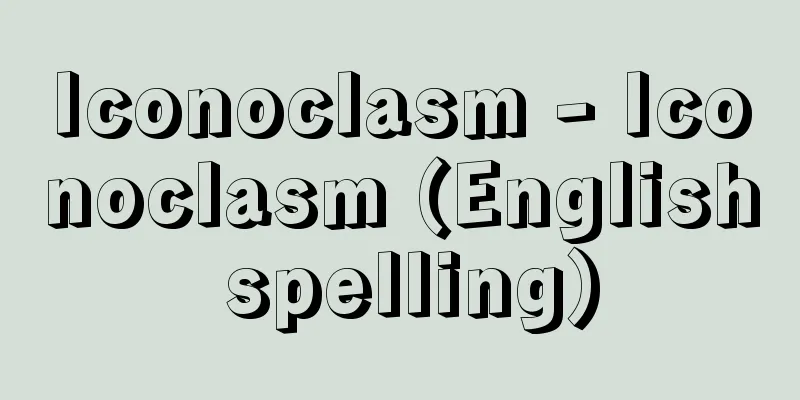Shimazu Genzo

|
Inventor. First president of Shimadzu Corporation and founder of Japan Battery Company (now GS Yuasa). Born in 1869 as the eldest son of Genzo I (1839-1894), a blacksmith in Kiyamachi Nijo, Kyoto. His childhood name was Umejiro. His father had a talent for invention and founded Shimadzu Corporation in 1875 (Meiji 8). He produced and repaired scientific equipment for use in school education, exhibited his work at the First Domestic Industrial Exposition in 1877, and in 1878 produced a light air balloon which he successfully launched at the Kyoto Imperial Palace. When Makimura Masanao, the governor of Kyoto Prefecture at the time, established the Chemical Sciences Bureau in Kawaramachi Nijo and invited Wagner to actively introduce and popularize scientific education and chemical technology, Shimadzu sought his guidance and exhibited a distiller and Magdeburg hemisphere at the Second Domestic Industrial Exposition, winning prizes, and began full-scale production of scientific and chemical equipment. Umejiro dropped out of elementary school after the second year and taught himself physics and chemistry while helping out with the family business. In 1884, he built Japan's first electrostatic generator (electrostatic generator), laying the foundation for today's static electricity experiments. In 1887, he became a metalwork teacher at Kyoto Prefectural Normal School and was also appointed to the elementary school teacher proficiency examination committee. After his father died in 1894, he took on the name Genzo and became head of Shimadzu Corporation, managing the company alongside his younger brothers Genkichi and Tsunesaburo. In 1917 (Taisho 6), he spun off the storage battery division and established Japan Battery, at the same time making the factory a joint-stock company. Although he did not receive formal schooling, he was theoretically inclined and achieved many technological developments based on his practical experience and brilliant ideas. One of these was his early work on X-ray photography in 1896. His invention (1920) of a "method of manufacturing highly reactive lead powder" for use in electrodes in large stationary industrial batteries was widely recognized not only in Japan but around the world, receiving patents in the UK, France, Germany, the US and other countries, making him the star of technology exports in the 1920s. In 1930 (Showa 5), he was selected as one of Japan's ten greatest inventors, and he passed away in 1951 at the age of 82. Shimadzu Corporation's "40th Anniversary of Reorganization" (1957) reports that "he never lost his interest in science until the very end, and even while bedridden in his later years, he made two inventions and was always busy enjoying physics experiments with colliding balls." [Kenichi Iida] "The Triumph of Japanese Science: Genzo Shimazu, the King of Inventors" by Goro Inoue (1939, Fuji Shobo) " "Pioneers of Technological Thought" by Kenichi Iida (1977, Toyo Keizai Shinposha) [References] | | | |The factory was located in Kawaramachi-dori Nijo, Kamigyo Ward, Kyoto City, Kyoto Prefecture (now Nakagyo Ward). "Kyoto Prefecture Photo Album" (1908 (Meiji 41)) National Diet Library Shimadzu Corporation (Meiji period) Source: Shogakukan Encyclopedia Nipponica About Encyclopedia Nipponica Information | Legend |
|
発明家。島津製作所初代社長、日本電池会社(現、GSユアサ)の創業者。明治2年、京都木屋町二条の鍛冶(かじ)職、初代源蔵(1839―1894)の長男に生まれる。幼名は梅治郎。 父は発明の才があり、1875年(明治8)島津製作所をおこした。学校教育用の理化学器械の製作・修理を手がけ、1877年には第1回内国勧業博覧会に出品したほか、1878年軽気球を製作して京都御所でその浮揚に成功した。時の京都府知事槇村正直(まきむらまさなお)が河原町二条に舎密局(せいみきょく)を設立し、ワグネルを招いて理化学教育や化学技術の積極的な導入・普及を企てると、その指導を仰ぎ、第2回内国勧業博覧会に蒸留器、マクデブルク半球などを出品して受賞、理化学器械の本格的な製作を開始した。 梅治郎は小学校を2年でやめ、家業を手伝いながら独学で理化学の実力を身につけた。1884年日本最初の感応起電機(静電発電機)を製作、今日の静電気実験の基礎を築いた。また1887年からは京都府師範学校の金属手工科教員となり、小学校教員学力検定試験委員にも任じられた。1894年父が死ぬと源蔵を襲名して島津製作所主となり、弟の源吉、常三郎とともに経営にあたる。1917年(大正6)に蓄電池部門を独立させて日本電池を設立し、同時に製作所を株式会社とした。正規の学校教育は受けなかったが理論的であり、実地の経験と優れた着想から多くの技術開発を成し遂げた。1896年にいち早くレントゲン写真撮影に取り組んだのもその一つである。産業用大形据置き蓄電池の電極のための「易反応性鉛粉製造法」の発明(1920)は日本だけでなく世界に広く認められて、イギリス、フランス、ドイツ、アメリカなどでも特許をとり、1920年代の技術輸出の花形となった。1930年(昭和5)には日本十大発明家の一人に選ばれ、昭和26年、82歳で没した。島津製作所『改組40年記念誌』(1957)は「最後まで科学する心を失うことなく、晩年病床にあっても2件の発明をしたほか、衝突球の物理実験を楽しむのに余念がなかった」と伝えている。 [飯田賢一] 『井上五郎著『日本科学の勝利・発明王島津源蔵』(1939・富士書房)』▽『飯田賢一著『技術思想の先駆者たち』(1977・東洋経済新報社)』 [参照項目] | | | |京都府京都市上京区河原町通二条(現在は中京区)にあった工場。『京都府写真帖』(1908年〈明治41〉)国立国会図書館所蔵"> 島津製作所(明治時代) 出典 小学館 日本大百科全書(ニッポニカ)日本大百科全書(ニッポニカ)について 情報 | 凡例 |
>>: Shimazu Family Documents - Shimazuke Monjo
Recommend
Prajapati (English spelling)
…In the hymn to “neither nothing nor being” in th...
King Kashyapa
…Jammu and Kashmir is also famous as a tourist de...
Aluminum Notebook - Alminoto
...For safety reasons, an emergency release devic...
Berlin Conference
An international conference was held in Berlin fr...
Japanese Communist Party
A Japanese communist party. Founded in 1922 (Tais...
Jutes - Jutojin (English spelling)
A Germanic tribe originally from the Jutland Peni...
Judaism
Judaism is the religion of the Jews. Currently, s...
Garden of Gethsemane - Gethsemane
Gethsemane means "olive oil press" in He...
Overseas coal - Kaigaitan
…The 6th Coal Policy was also issued in July of t...
Industrial aviation - Sangyōkōkū
A business that uses aircraft to perform services...
Toshiki Imai - Imai Toshiki
Historian. Born in Suwa, Nagano Prefecture. Gradu...
Lead - Namali
Pb. Atomic number 82. Electron configuration [Xe]...
Silk Road (English spelling)
A trade route connecting ancient China and the Wes...
Free trade - jiyuboueki (English)
The abolition of state interference in trade tran...
Sea ghost
A monster that appears on the seashore. A type of ...









